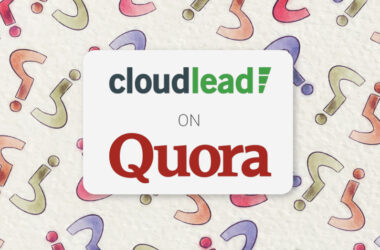Some people shiver when they receive a cold email. However, many of us mistake a cold email for a spam email. They are completely different things. When people talk about cold emailing you might hear things like, “Isn’t that spamming?”, “I hate receiving cold emails, I doubt they work” and “isn’t that illegal?”.
Cold emailing is an amazing way to build a high-value sales pipeline. Also, there are clear distinctions between what is considered a spam email and a cold email. Sometimes there is a fine line between what is considered spam and what is not.
Here Are Some False Statements About Cold Emailing:
- Cold emailing is illegal- Nope, millions of sales and marketing professionals are sending out cold emails all the time. It’s just important to follow some ground rules when cold emailing. Also, always check electronic communication, consumer data privacy regulations. [for some more context you can also read: 3 must-read points about GDPR compliance if you’re in sales or marketing]
- Cold email is ineffective- The market dynamics have changed a lot. Ten years back, you could write a general email and get a response easily. Now, the market has forced sales and marketing professionals to think out of the box. Also, never hesitate to go back to the basics. Understand your ideal customer profile in detail and share value, not a meeting, product or features. Did you know that according to Sam Nelson from Outreach.io, 90% of their sales success is from outbound?
- Nobody likes receiving a cold email- It’s intrusive, but if you dislike every cold email you’re getting, then you may not have received a genuine cold email as of yet. This would also not be your fault at all. According to the M3AAWG Email Metrics Report, 90% of all emails are spam. In a way, real cold emailing hasn’t penetrated us as much yet. The concept of a cold email is simple, deliver value and be clear about the problem being solved. Often at times, people don’t know what solution they need, this is another reason why true outbound marketing works!
9 Clear Differences Between Spam Email And A Cold Email
Cold Email
- Highly personalized
- Sent only to the ideal customer profiles
- A clear and visible opt-out option
- Sounds honest and realistic
- Sent from legitimate people and email accounts.
- Sent from professional email accounts with proper signatures.
- Valuable and strong follow-up sequences.
- Have good grammar and don’t use spam language.
- The offering is highly relevant to your business.
Spam Email
- No personalization
- Sent to anyone and everyone. Spam emailers play with luck.
- Opt-out option not clearly visible
- Contain false promises
- The sender or senders company may not exist.
- Sent from non-business email domains. The emails would be worded unprofessionally.
- Overly persistent follow-up sequences.
- Contain a lot of spam words like “Free” or “Special offer”.
- The offering may or may not apply to you.
The next time you receive a cold email, maybe you ought to keep these points in mind. Spam emails don’t even deserve a response. Cold emails, on the other hand, might be worth giving a second look.
Before sending your targeted cold emails to your audience, make sure you have access to high-quality contact and account data. If not, Cloudlead can always lend a helping hand with providing data with guaranteed quality.
Only the best data fuels the best cold emailing campaigns.
Cloudlead specializes in sales prospecting and B2B lead generation. We mine top of the funnel leads based on your ideal customer profile with sales triggers that help you close more deals than ever. Want to learn more? Book a demo with us today.










